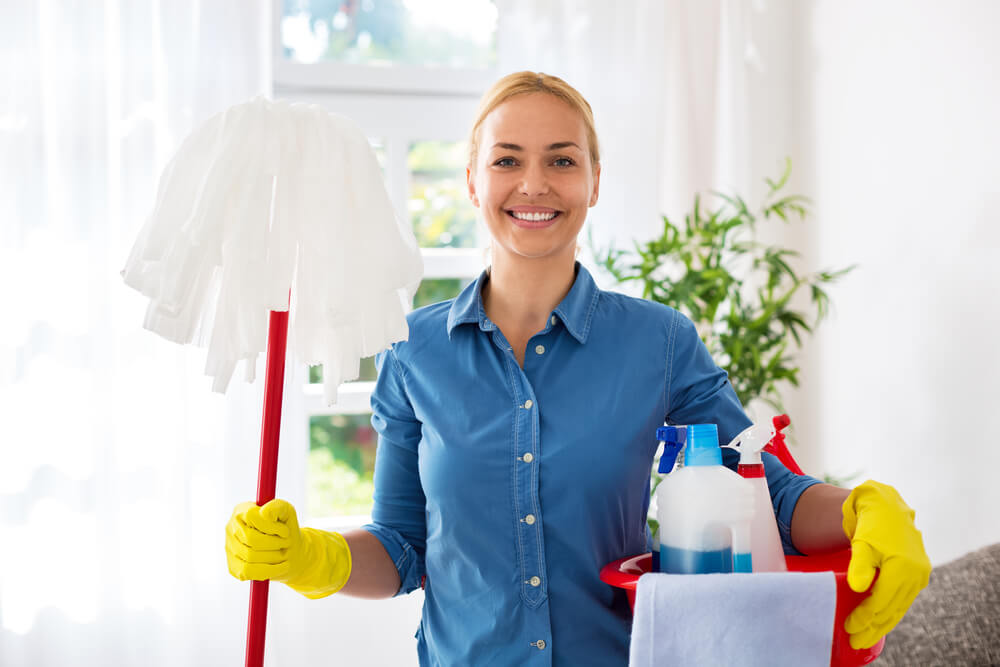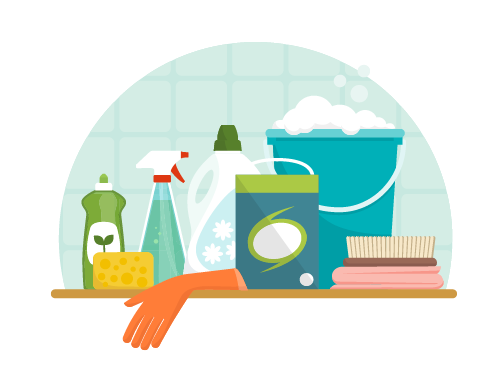Detailed Everyday Cleaning Guide: The Best Way to Scrub the Surfaces, Vacuum Carpets, and Clear Out Any Clutter Effectively
Understanding the Demand for Completely Sanitizing and Sanitizing Frequently Touched Surfaces in High-Traffic Areas
In the realm of public wellness and security, the thorough sanitation and sanitization of regularly touched surface areas in high-traffic locations stand as vital steps in stopping the spread of harmful pathogens. The importance of this technique prolongs far past mere tidiness, diving into the world of disease prevention and community health. By checking out the numerous elements of surface sanitation, from the risks associated with neglecting cleansing protocols to the reliable techniques that can be used, a clearer understanding emerges of the essential function these practices play in securing public health and wellness. As we browse this conversation, it becomes obvious that the effects of extensive surface area sanitation resound not just within the confines of a particular atmosphere however likewise reverberate on a more comprehensive scale, influencing the health and wellness and safety of people across varied communal setups.
Significance of Surface Area Sanitation
Highlighting the extensive disinfection of high-traffic surface areas is critical in preserving a hygienic atmosphere and preventing the spread of unsafe virus. High-touch surface areas such as door deals with, light buttons, elevator buttons, and counter tops function as breeding grounds for microorganisms and viruses. Routine sanitation of these surface areas is important to decrease the risk of contamination and transmission of health problems.
By executing a robust disinfection method, businesses and institutions can develop a safer setting for staff members, customers, and visitors. Correct surface area disinfection not just minimizes the spread of infectious diseases but likewise imparts self-confidence in the tidiness and safety and security of the premises. This proactive method demonstrates a dedication to wellness and health, which is particularly important in high-traffic locations where the likelihood of direct exposure to virus is heightened.
In addition, surface area disinfection plays an essential duty in general infection control methods. Integrated with hand hygiene practices, wearing masks, and maintaining physical distancing, comprehensive sanitation of high-touch surface areas develops a thorough defense against the transmission of dangerous bacteria. Focusing on surface area disinfection is a necessary component of an alternative strategy to health and wellness and safety in common rooms.
Risks of Ignoring Cleaning Practices
Neglecting detailed sanitation of high-traffic surface areas considerably enhances the risk of viral and microbial contamination, presenting a severe danger to the health and wellness of people frequenting these rooms. Failing to carry out proper cleaning techniques can bring about the buildup and spread of dangerous microorganisms, including germs and viruses, on often touched surface areas such as doorknobs, handrails, lift switches, and counter tops.

Furthermore, ignoring the relevance of comprehensive cleaning not only jeopardizes the well-being of people yet likewise undermines efforts to maintain a tidy and sanitary atmosphere. It is essential to recognize the relevance of proper sanitation protocols in preventing the spread of infections and guarding public health and wellness.
Reliable Disinfection Approaches
To preserve optimum tidiness and lower the risk of contamination on high-traffic surface areas, employing efficient disinfection techniques is essential. One of one of the most efficient and typical sanitation methods is making use of chemical disinfectants. These products can differ in strength and structure, with some targeting specific microorganisms like microorganisms or viruses. It is important to adhere to the producer's guidelines for proper dilution, call time, and ventilation when making use of chemical disinfectants to ensure their performance - Everyday cleaning.
Another effective method is using UV-C light. UV-C light has been shown to be efficient in eliminating a broad selection of microorganisms by disrupting their DNA structure, thus avoiding them from duplicating. Nevertheless, it is necessary to make use of UV-C light effectively, ensuring that the correct strength her explanation and direct exposure time are related to accomplish the preferred disinfection outcomes.
Additionally, employing vapor cleaning as a sanitation technique can be highly reliable, particularly on surfaces that are heat-resistant. Vapor can penetrate permeable surfaces and eliminate germs, viruses, and various other pathogens properly. When utilizing vapor cleaning, it is essential to make sure that the surface gets to the required temperature level for a sufficient quantity of time to guarantee appropriate sanitation.
Influence On Public Wellness
The maintenance of high criteria of tidiness and sanitation on high-traffic surfaces plays a crucial function in protecting public wellness. Frequently touched surface areas in areas with high tramp, such as doorknobs, handrails, elevator switches, and restroom facilities, work as breeding premises for hazardous microorganisms. Falling short to appropriately sanitize these surface areas can bring about the rapid spread of contagious conditions within communities. By executing detailed disinfection procedures, the danger of transmission of infections, microorganisms, and other germs can be dramatically lowered.
Efficient cleanliness methods not just secure people from falling sick however likewise add to the general wellness of society. Public health and wellness authorities highlight the value of maintaining clean environments to stop outbreaks and contain the spread of illnesses. In high-traffic areas like airport terminals, colleges, hospitals, and public transportation systems, the influence of strenuous sanitation procedures can not be understated. Prioritizing the sanitization of frequently touched surface areas is an aggressive technique to promoting public health and boosting the safety and security of people in shared spaces.
Applying Routine Cleansing Procedures
Promptly setting up and adhering to a regular routine of cleansing protocols is critical for preserving the cleanliness and safety and security of high-traffic surfaces. Regular cleansing protocols are crucial in stopping the buildup of germs and virus on frequently touched surface areas, especially in locations with high foot website traffic. By carrying out a systematic technique to cleansing, organizations can successfully reduce the danger of condition transmission and create a healthier setting for employees, clients, and the general public.
To establish an efficient cleansing schedule, it is important to recognize high-traffic areas that require regular focus. These areas may include doorknobs, hand rails, lift buttons, washroom centers, and common equipment. Executing a regular cleansing routine that targets these surfaces multiple times a day can substantially minimize the spread of harmful bacteria and viruses.
Additionally, making use of ideal cleaner and disinfectants is essential to making sure that surface areas are extensively disinfected. Normal training of cleansing team on proper site cleansing techniques and the importance of adherence to the cleaning schedule is also important in keeping a sanitary atmosphere. By prioritizing constant cleaning procedures, organizations can promote the health and well-being of people that connect with these high-traffic surface areas.

Conclusion
In verdict, it is vital to prioritize thorough sanitation and sanitization of often touched surface areas in high-traffic locations to avoid the spread of damaging microorganisms and keep public wellness. Disregarding proper cleaning practices can increase the risk of contamination and transmission of diseases. By executing routine cleaning protocols and using effective disinfection methods, we can create a safer environment for every person (defrosted and cleaned every few months). It is crucial to identify the relevance of preserving clean surfaces in high-traffic areas to ensure the health of the area.
In the world of public health and safety and security, the careful disinfection and browse around this site sanitization of regularly touched surface areas in high-traffic areas stand as extremely important procedures in avoiding the spread of harmful virus. By exploring the numerous aspects of surface area disinfection, from the threats connected with neglecting cleansing protocols to the reliable methods that can be used, a clearer understanding arises of the vital role these techniques play in protecting public wellness.Additionally, using steam cleansing as a sanitation technique can be very effective, specifically on surfaces that are heat-resistant. When utilizing vapor cleansing, it is vital to make sure that the surface area reaches the needed temperature level for a sufficient quantity of time to assure proper disinfection.
In verdict, it is essential to focus on thorough disinfection and sanitization of often touched surface areas in high-traffic locations to avoid the spread of dangerous virus and maintain public health and wellness.